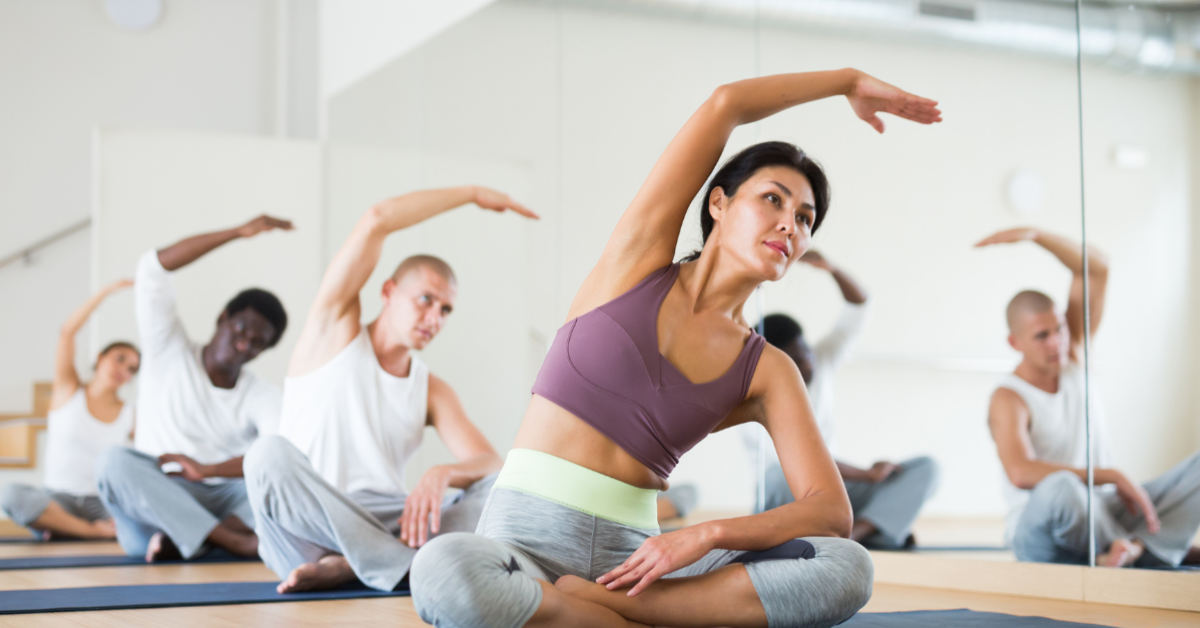Yoga has its origin in India. It is a form of personality development exercise that covers the physical, mental, and spiritual aspects of the human body. It is the system that relates to the practice of certain movements involving mainly breathing and meditation and some postures to make the body and the mind more competent.
To ensure harmony of the mind and the body, one must perform yoga. It is a form of physical activity that contributes to bringing order and discipline into one’s life. It is also a way of life for some people.
Yoga encompasses the triad – body, soul, and mind and tries to introduce order among them. By doing so, it helps strengthen the mental as well as physical abilities. This makes a person more confident, with stronger willpower and self-control. For different purposes and functions of the body, there are different types of yoga.
Characteristics of Yoga
As holistic of practice as yoga is, there are different types of yoga. However, there are certain characteristics of yoga:
Physical Postures (Asanas): Yoga contains lots of positions aimed at increasing flexibility, strength, and balance. Every posture works on certain parts of the body and is normally maintained for some time to increase the benefits.
Breathing Techniques (Pranayama): They include the practice of controlled breathing essential in controlling energy and helping in concentration. Pranayama helps in reducing stress, and controlling the mind. It is effective in giving a boost to the total health of an individual.
Meditation and Mindfulness: Yoga also focuses on the mental part, aiming to be aware of one’s thoughts and emotions and not to let them divert elsewhere. It may help in developing the aspect of mental health and harmony in individuals.
Spiritual Connection: Originating from ancient Indian origins, yoga sometimes includes aspects of spirituality, self-realization, and the cosmos. This may require chanting, reciting sacred words – mantras – or other reflective analysis of scriptures or other religious texts.
Holistic Health Benefits: Yoga poses help to improve the heart health, the digestive system, immune system, and even provide relief from diseases such as arthritis and back disorders.
Adaptability and Inclusivity: Yoga can fit any age, personnel, and physical ability of a person in the society. Due to the flexibility of the poses and the possibility to change their execution, everyone can adopt it.
These characteristics of yoga make it a preferred technique for the overall development of the physical, mental, and spiritual aspects of a person.
Different types of Yoga
1. Hatha Yoga
Hatha yoga is one of the types of yoga aiming at the restoration of the physical and spiritual balance of people through the performance of certain exercises and breathing. Pranayama is widely applied as the base for all other yoga workouts. It presupposes slow motor activity and combined movements with deep breaths.
Hatha yoga mostly aims to build up the physique to prepare the body for a period of meditation. It is thus appropriate for novices and both stock and intermediate participants. It is safe and perfect for realizing the anticipated unity of the mind and the body.
2. Vinyasa Yoga
Vinyasa Yoga is one of the most recognized forms of yoga cemented from other forms by the rapidly adopted sequences of movements. Many also call it flowing yoga. It is quite similar to Ashtanga but less rigid. Like Ashtanga, the sequence of the poses is done continuously without rest in between. Hence, it increases the circulation of blood, builds muscles as well, and increases flexibility. Thus helping in the health of the heart.
Another advantage of Vinyasa Yoga is a boost in the area of focus. The involved individual must harmonize their breath and movements. Probably the range may differ in the sessions and this flexibility and innovation is as well observed in practice. As the name suggests, the type of yoga referred to as Vinyasa Yoga is suitable for novices, the intermediary, and even the adept contenders. This makes Vinyasa Yoga to be very special for all the performers.
3. Kundalini Yoga
Kundalini is also a practice of yoga that focuses on the awakening of force at the base of the spine. The practice involves the utilization of certain body postures, rhythmic breathing patterns, meditation, and voiced sounds or mantras to generate and circulate this energy through the main vortexes or wheels of the body called chakras
Kundalini Yoga has been practiced with the objectives of rebirth and spiritual evolution, besides special consciousness and serenity. It is scientifically proven to reduce stress, regulate emotions, and enhance vitality and is renowned for the changes it provides. Kundalini Yoga is suitable for anyone interested in practicing it as it is a sure package for persons of all categories.
4. Bikram Yoga
Bikram Mysore is the type of yoga that Bikram Choudhury used to practice. This yoga includes performing precisely 26 postures and 2 breathing exercises in a room filled with warm air. Housed in a normal room with standard conditions of 75ºF/ 25ºC, and 40% relative humidity, it tries to mimic the normal environment of India outside India.
The method of using heat in increasing the efficiency of muscle stretch, secretion of waste products by sweat glands, and blood circulation is used today. The nature of the activities of both the 90-minute sessions, as described above, is the same and they would have helped lay down the building blocks for the muscular memory. Of all the yoga styles Bikram Yoga is almost like a ritual therefore, it is suitable for those in preparation towards increasing flexibility as well as muscularity for the health and circulation of the human body.
5. Ashtanga Yoga
Ashtanga Yoga is another dynamic and formal yoga style. It was formulated by K. Pattabhi Jois. It is a sequence of postures or asanas combined with the breath control or ujjayi pranayama and as a result, forms an intense style of yoga known as the ‘vinyasa’. The first series of the asanas is known as the ‘Shatkarmas’ that helps in the purification of frames.
Ashtanga Yoga is based mainly on practices of self-control, commitment, and the proportions of the movements and the breath. One may contribute to the enterprise for fitness or mentally well trained assists a lot. This practice is suitable for those wanting to undergo a lot of change and development as well as establish a new level of achievement
Conclusion
For a person to know which type of yoga is suitable for his or her body, mind, and spirit, there is a need to understand different types of yoga. Starting from the Ashtanga Yoga where there is a sequence and approach, the Hatha Yoga is characterized by relatively slow movements, and finally Vinyasa Yoga where such movements are fast.
Thus, no matter the striving to supplement flexibility, strength, relaxation, or presence-of-mind training, there exists a kind of yoga that corresponds to health. The forms that these types offer allow the practitioner to begin the process of achieving a healthy and restful soul in a manner the most suitable for them.


